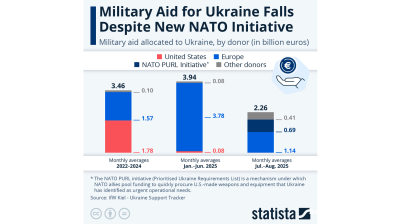Kosovo to be fastest-growing economy in Central, Southeast Europe this year as regional boom passes peak

The fastest-growing economies in the Central, East and Southeast Europe (CESEE) region in 2019-2021 will be Kosovo, Albania and Moldova, a report from the Vienna Institute for International Economic Studies (wiiw) projected on March 27.
Moldova’s GDP is expected to expand 3.8% this year, with the growth slowing down in the following two years, to 3.6% in 2020 and 3.5% in 2021. In Albania, growth is seen at 3.8% both in 2019 and 2020 and at 3.4% in 2021, while Kosovo’s GDP should expand 4.1% this year, 4% next year and 3.9% in 2021.
Growth peaked for CESEE in 2017-2018 and the expansion is expected to slow in the coming years. The weakest economies are expected to be Russia, Turkey and Belarus.
“Although strong wage rises, low interest rates and a generally positive outlook for investment will keep economic activity at reasonably robust levels, the peak of the cycle has passed. A mixture of serious external headwinds and domestic challenges will mean that most of the region’s economies expand more slowly in 2019-21 than in 2016-18,” wiiw said.
Last year, the fastest growing economies were Hungary and Poland, while sharp slowdowns were observed in Turkey and Romania after previous overheating.
At the global level, the slowdown in key sources of final demand such as Germany and China will negatively impact CESEE exports in 2019-2021. The Czech Republic, Hungary, Slovakia and Slovenia are most exposed to this, owing to both the extremely elevated share of exports in GDP and their high degree of integration into regional and global value chains, wiiw noted.
The institute identified as the main challenges to medium and long-term growth in CESEE the demographic decline, the attacks on the quality and independence of institutions, a lack of preparedness for the new digital economy, and low levels of automation relative to frontrunners in Asia, North America and Western Europe.
| GDP real change in % y/y | |||
| 2019 | 2020 | 2021 | |
| Bulgaria | 2.8 | 2.5 | 2.5 |
| Croatia | 2.6 | 2.7 | 2.8 |
| Romania | 2.8 | 3 | 3.2 |
| Slovenia | 3.2 | 3 | 2.9 |
| Albania | 3.8 | 3.8 | 3.4 |
| Bosnia and Herzegovina | 2.5 | 2.6 | 2.7 |
| Montenegro | 2.5 | 2.2 | 2 |
| North Macedonia | 3 | 3 | 3 |
| Serbia | 3.4 | 2.9 | 2.9 |
| Kosovo | 4.1 | 4 | 3.9 |
| Moldova | 3.8 | 3.6 | 3.5 |
| Source: wiiw | |||
Data

India’s retail payment revolution
India’s payments landscape has reached a pivotal stage, with digital transactions now accounting for 99.8% of all retail payments.

Military aid for Ukraine falls despite new Nato PURL initiative – Statista
The Kiel Institute for the World Economy found that military aid to Ukraine dropped sharply in July and August compared to previous months, despite the implementation of the Nato PURL initiative.

IMF cuts Russia’s 2025 growth forecast to 0.6%, leaves Ukraine's unchanged at 2%
The International Monetary Fund has lowered its forecast for Russia’s economic growth in 2025 to just 0.6%, marking the second-steepest downgrade among major economies, even as it raised its global outlook.

Russia's PMI indices plummet as economy cools
Russia’s private sector entered deeper contraction in September, as both services and manufacturing activity declined, according to the latest PMI data published by S&P Global.



